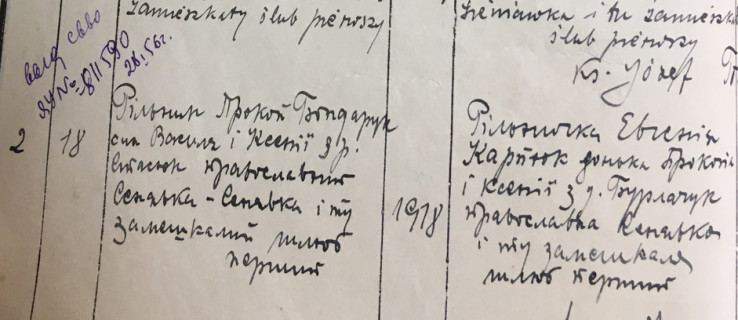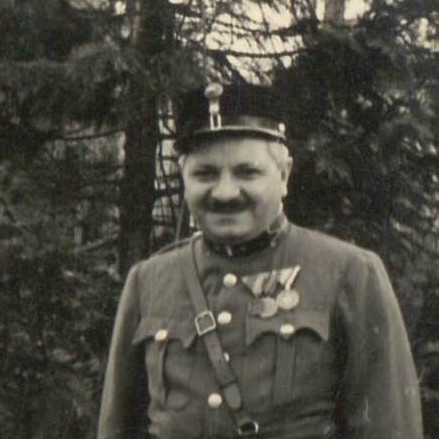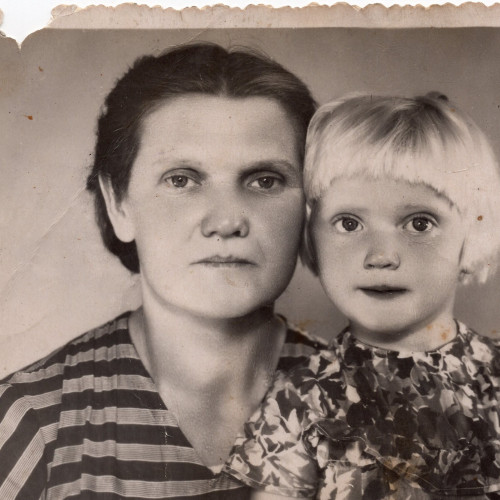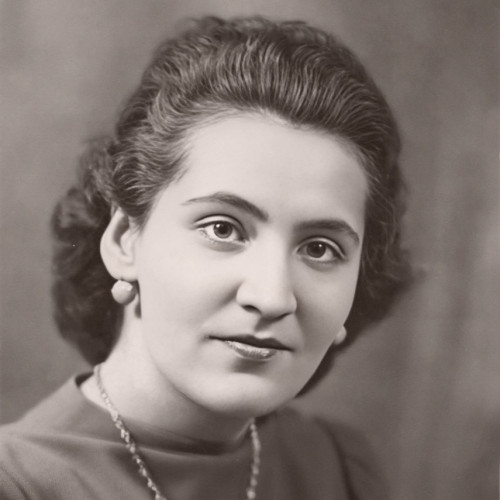Oksana Karpiuk (1892-?) - Instytut Pileckiego

Oksana found the children at nightfall. She hid not only the youngest members of the Polish family at her home, but also the elderly – the parents and the grandmother.
Doubtless for Oksana from the Volhynian settlement of Sieniawka, widowed in 1935, the marriage of her daughter, Yevhenia, was aconsiderable comfort. She was no longer threatened with loneliness, especially as after their wed- ding her daughter and son-in-law, Prokop Bondaruk, moved in next door.

The Polish Adamowicz family had its farmstead in nearby Aleksandrówka. The Adamowiczs survived an attack launched by the Ukrainian Insurgent Army (faction of the Organization of Ukrainian Nationalists) on Aleksandrówka in the night from 15 to 16 July 1943, and since then had been living in hiding. During the day, four of their children hid in the corn – a fact that did not escape Oksana’s attention. Towards the end of August, firing once again erupted in Sieniawka. Oksana found the children at nightfall. She hid not only the youngest members of the Polish family at her home, but also the elderly – the parents and the grandmother. Oksana was aided by both her daughter and son-in-law.
Soon, the Adamowicz family decided to split up: the parents took the three youngest children and concealed themselves in a bunker hidden in a field, while Teresa (the oldest daughter) and the grandmother, Tekla, moved to the Bondaruks’ farm. It would be hard to imagine Yevhenia and Prokop’s terror when Banderites started searching through their farm buildings. As Teresa recalled:
“They walked over the hay and stuck it with their bayonets. But there was a beam near where we were hiding, and so they did not bayonet us.”
During the next raid on Aleksandrówka, the Banderites murdered Teresa’s parents and her three siblings. Not wanting to further put the lives of her granddaughter and the Bondaruks at risk, Tekla Adamowicz donned a traditional Ukrainian apron and skirt and somehow smuggled Teresa through
o the Zamość region. In 1944, they were joined by Michał, Tekla’s husband, who had been saved by the Ukrainian Kyts family.
Yevhenia and Prokop Bondaruk survived the war. They moved to Czerwonogród, where they lived until their deaths in the 1990s.
“After nightfall, a Ukrainian woman, Mrs. Prokop [Oksana Karpiuk], went into a field looking for us, because she had seen us fleeing. Mrs. Prokop was a widow, her daughter Zhenia was my friend. My parents, siblings and grandmother were waiting for us at her place. That was also where we made the decision that my grandmother and I would go to Mrs. Prokop’s son-in-law [Prokop Bondaruk], while my parents and siblings would hide elsewhere.”
Account of Teresa Radziszewska, Kiedy przyszli nas zabijać, Archiwum Ośrodka Karta [KARTA Center Archives], AW II/1914
See also
- Jenő Etter (1889–1973)

awarded
Jenő Etter (1889–1973)
The mayor of the Hungarian city of Esztergom received dozens of letters written in Polish. The greeting lines themselves showed the sympathy and gratefulness of the Polish refugees: “Dear Captain!”, “Dear Doctor!”. Jenő Etter understood them all.
- Zinaida Giergiel z d. Radczuk (1912—1989)

awarded
Zinaida Giergiel z d. Radczuk (1912—1989)
Zinaida Giergiel suspected that after being chased out of their homes and suffering from hunger, the Poles would attempt to return to their farms. She was able to warn polish family that a unit of the OUN/UPA was waiting for them in the house.
- Etela Laczuschová

awarded
Etela Laczuschová
(1922–1944)The Kežmarok house was a unique location for Polish couriers and refugees: they could rest and recuperate there, eat a meal, or obtain necessary assistance.


